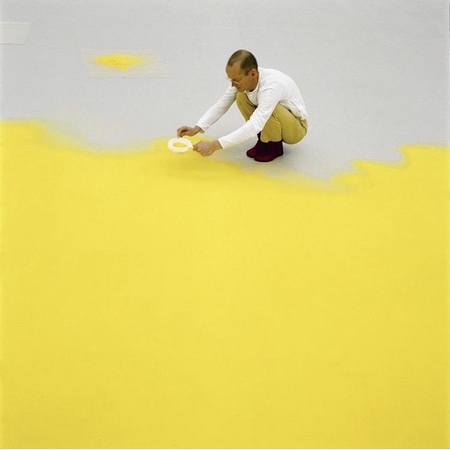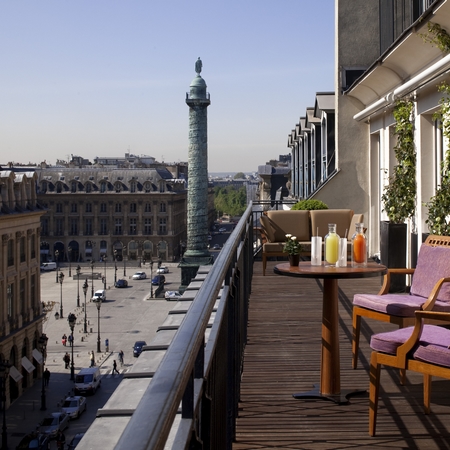In 2010, the gastronomic meal of the French was inscribed on the UNESCO Representative List of the Intangible Cultural Heritage of Humanity.
The gastronomic meal of the French is a customary social practice for celebrating important moments in the lives of individuals and groups. It is a festive meal bringing people together for an occasion to enjoy the art of good eating and drinking. This gastronomic meal emphasizes the pleasure of taste and the balance between human beings and the products of nature. And should respect a fixed structure, starting with an apéritif and ending with liqueurs, containing in between at least four successive courses, namely a starter, fish and/or meat with vegetables, cheese and dessert.
What we call the Art of the Table are the arts associated with a meal shared with others, including the presentation, the meals, the polite conversation but also the decorations, the tableware, and the place that is chosen for these gastronomical and oenological pleasures. It’s not as simple as it seems. One must, first of all, be familiar with the menu, knowing the meals that are chosen as well as the drinks with which they best pair. Attention must be paid to the porcelain and the faience, the glassware and the crystalware. The tableware must be chosen with as much care as the guests’ seats at the table, without forgetting the space for decoration. The manner in which guests are received and served is the final touch. This French Art de la Table is practiced both privately, with friends and family, and formally, such as in diplomacy and professional meetings at restaurants.
The expression “to set the table” comes from the Middle Ages. The lords would take their meals in different rooms of the castle depending on the season, the type of reception, or the number of guests. Table extensions would thus be added at the last moment according to the designated room. The French term for tableware “couverts” (covers; to be covered) dates from the same period when kitchens were often far from the dining rooms, the plates were brought out “covered” by another plate, so as to keep it warm. As for the arts of the table, the habits are much more recent. The use of a fork only became commonplace after Louis XIV, and silverware only truly made its appearance with the invention of silver plated metal. During the Renaissance, art was once again welcomed into dining rooms with the arrival of faience. Around 1750 the usage of kaolin, also known as china clay, in French porcelain resulted in a quality that was unrivaled. Thanks to the deposits found around the city, Limoges became a center of production for this famous porcelain, capable of even competing with the one coming from Asia. In the 18t h century, the art of the table is still much different than the one we know today. It consists of several services, sometimes up to eight. With each service, the servants would bring multiple meals out to the table. The guests would eat from these plates, tasting from each of them until the plates are taken away and a second service arrives and so forth. In the 19th century, a Russian ambassador, Alexandre Kourakine, brought with him the Russian table service: the guests are seated, the servants bring the meals and serve each guest in their own plate one after the other. This was a revolution of sorts. It is the service that we know today, which has been rebranded as French table service after the war waged on Russia. This form of service is now international.
If French cuisine is known the world over, its art of setting the table cannot be disassociated from the gastronomy. There are a few rules for setting a table correctly: The plate is placed 3 centimeters above the edge of the table. The bread plate is set at the top left. The placement of silverware follows a simple logic: their usage. The fork, held in the left hand, is placed on the left side. They are then set in order of the meals: the starter course fork is the furthest from the plate, while the main course fork is closest to the plate. The dessert wares are placed in between the plate and the glasses. In France, forks are set with the teeth down on the tablecloth, while the back of the spoon is turned towards the ceiling. Knives have their sharp edge facing the plate. Glasses are placed in descending order of their size: the water glass is on the left, followed by the red wine glass and the white wine glass. The occasional champagne flute is set aside to the right.
Today, all the while keeping the traditional codes of setting the table, modern tables place added value on design, new shapes, colors, themes, playing around with location and tableware, matching or not, to create a shocking and creative ambiance which reflects the personality of the guests. The table can be personalized. The host, in setting their table, can almost become a creator of French art de vivre!
The art of silverware by Christofle
Founded in 1830 by Charles Christofle, this French company was one of many which contributed to developing the French art of the table. It was originally a small jewelry shop wherein Charles was an apprentice before taking it over. He turned its destiny upside down by practicing industrial scale gilding through the method of electroplating for which he had bought the patent. His success was immediate: the bourgeoisie unable to afford a set of true silverware flooded in as bridal registries became increasingly commonplace. In 1851, Christofle becomes the official supplier of the Second Empire. He sent out ambassadors with cases full of his most beautiful objects across the world. His luxury sales representatives met with emissaries of the Russian tsar, the Mexican emperor, and even the director of the Orient Express. By the end of the 19th century, Christofle reigned over the world’s most elegant tables. He called upon great artists and designers: Man Ray, Jean Cocteau, and the Italian architect Gio Ponti, who created the Flèche Candelabra in 1928. Christofle has become the staple brand for good families, passing down silver egg cups and napkin rings, and the darling of young couples compiling their bridal registry in the best stores.
Patricia Courcoux Lepic





